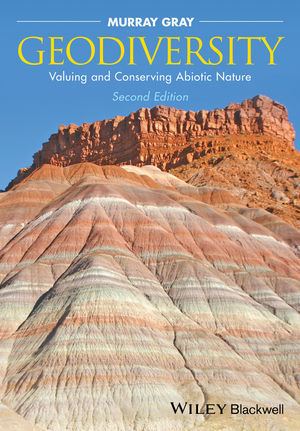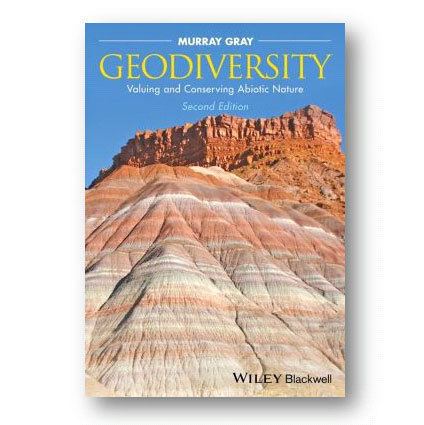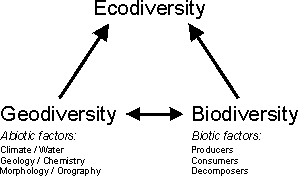 | ||
Conservation campus 0011 geoheritage geodiversity course part 1 of 8
Geodiversity is the variety of earth materials, forms and processes that constitute and shape the Earth, either the whole or a specific part of it. Relevant materials include minerals, rocks, sediments, fossils, soils and water. Forms may comprise folds, faults, landforms and other expressions of morphology or relations between units of earth material. Any natural process that continues to act upon, maintain or modify either material or form (for example tectonics, sediment transport, pedogenesis) represents another aspect of geodiversity. However geodiversity is not normally defined to include the likes of landscaping, concrete or other significant human influence.
Contents
- Conservation campus 0011 geoheritage geodiversity course part 1 of 8
- Clwydian range geodiversity
- Overview
- References

Clwydian range geodiversity
Overview

Geodiversity is neither homogeneously distributed nor studied across the planet. The identification of geodiversity hotspots (e.g. the islands of Great Britain and Tasmania) may be indicative not simply of the distribution of geodiversity but also of the status of geoconservation initiatives. In this regard it is worth noting that the biodiversity of an ecosystem stems at least in part from its underlying geology. With the majority of biological species remaining undescribed the classification and quantification of geodiversity is not an abstract exercise in geotaxonomy but a necessary part of mature nature conservation efforts, which also requires a geoethical approach.



